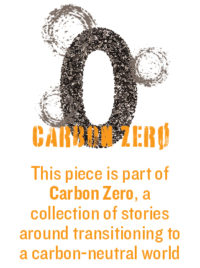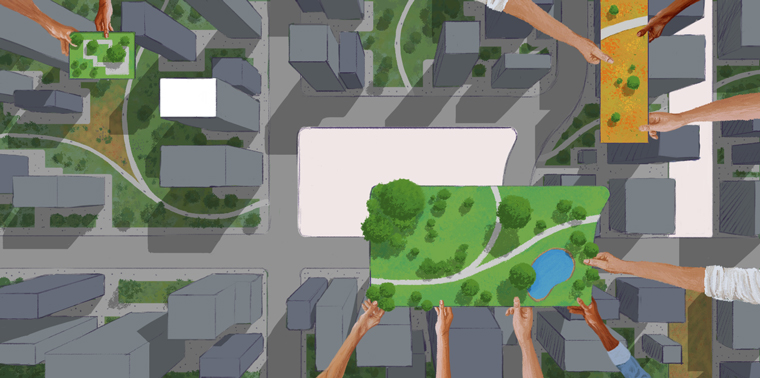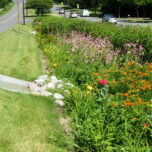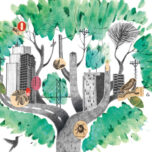November 20, 2023 —  We’ve long known that trees, parks and other green spaces can sequester carbon dioxide. But it turns out that’s just the tip of the iceberg as far as their ability to make the world a better place. When urban planners consider and work to maximize all effects on greenhouse gas emissions, the potential of these and other nature-based solutions (NBS) to contribute to climate goals multiplies many times over. In fact, if done right, NBS could help seven European cities achieve near if not total carbon-neutrality by 2030 — while also providing bountiful benefits related to resilience, biodiversity and human well-being.
We’ve long known that trees, parks and other green spaces can sequester carbon dioxide. But it turns out that’s just the tip of the iceberg as far as their ability to make the world a better place. When urban planners consider and work to maximize all effects on greenhouse gas emissions, the potential of these and other nature-based solutions (NBS) to contribute to climate goals multiplies many times over. In fact, if done right, NBS could help seven European cities achieve near if not total carbon-neutrality by 2030 — while also providing bountiful benefits related to resilience, biodiversity and human well-being.
In a paper published in Nature Climate Change in July, researchers from China, Sweden and the U.S. took a deep dive into how NBS can best contribute to the zero-carbon goals of 54 European cities. They found that green spaces and other nature-based greenhouse gas–mitigating infrastructure can do far more for climate than simply soak up carbon dioxide. By encouraging behavior changes such as walking, biking and gardening, as well as saving money and other resources, they also reduce greenhouse gas emissions.
“When all benefits are considered, NBS can contribute much more to urban climate neutrality goals than mere carbon sequestration effects,” the authors write.
To reach their conclusions, the researchers considered five types of NBS — green infrastructure, street trees and green pavement, green spaces and agriculture in cities, habitat remediation and preservation, and green buildings. They then assessed the potential emissions-reduction payoffs for 54 European cities by saving resources and money, reducing urban sprawl, encouraging environment-friendly behavior, improving microclimate, and storing carbon. They found the indirect climate benefits to be even greater than direct ones, with NBS able to reduce transport, residential and industrial emissions up to 25%.
Importantly, the research showed the significance of customizing the application of NBS to and within each city. For example, in Paris — where more than half of emissions come from residential areas — the best NBS approaches to apply are green infrastructure and green buildings, while in Stockholm, where the bulk of emissions are from transportation, maximum emissions reductions come from planting street trees and enhancing green spaces in cities.
“Identifying the carbon emissions reduction potential for different NBS provides valuable insight for policymakers and urban planners in prioritizing sustainable and effective solutions,” the authors conclude in a summary of their work. “By integrating NBS into city planning, and focusing especially on the indirect and behavioural effects of ecosystem services, there is an opportunity to create more climate-resilient and sustainable urban environments, improving the well-being of communities and reducing carbon emissions in the long term.”
Related Posts
Ensia shares solutions-focused stories free of charge through our online magazine and partner media. That means audiences around the world have ready access to stories that can — and do — help them shape a better future. If you value our work, please show your support today.
Yes, I'll support Ensia!




